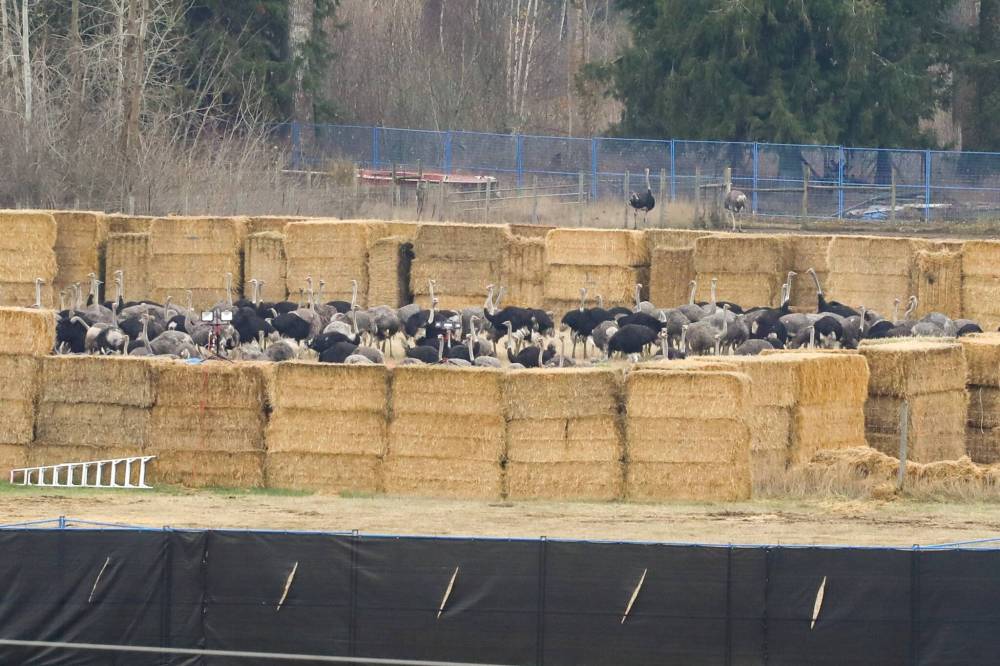Canadian Food Inspection Agency deserves thanks, not threats
Advertisement
Read this article for free:
or
Already have an account? Log in here »
To continue reading, please subscribe:
Monthly Digital Subscription
$0 for the first 4 weeks*
- Enjoy unlimited reading on winnipegfreepress.com
- Read the E-Edition, our digital replica newspaper
- Access News Break, our award-winning app
- Play interactive puzzles
*No charge for 4 weeks then price increases to the regular rate of $19.00 plus GST every four weeks. Offer available to new and qualified returning subscribers only. Cancel any time.
Monthly Digital Subscription
$4.75/week*
- Enjoy unlimited reading on winnipegfreepress.com
- Read the E-Edition, our digital replica newspaper
- Access News Break, our award-winning app
- Play interactive puzzles
*Billed as $19 plus GST every four weeks. Cancel any time.
To continue reading, please subscribe:
Add Free Press access to your Brandon Sun subscription for only an additional
$1 for the first 4 weeks*
*Your next subscription payment will increase by $1.00 and you will be charged $16.99 plus GST for four weeks. After four weeks, your payment will increase to $23.99 plus GST every four weeks.
Read unlimited articles for free today:
or
Already have an account? Log in here »
No one can fault the owners of Universal Ostrich Farms Inc. for challenging the order to cull their remaining flock following an outbreak of highly pathogenic avian influenza that killed 69 birds late last year.
We can appreciate their tenacity in pursuing the case all the way to the Supreme Court of Canada, pulling every legal, social media and emotional string they could find. We can empathize with their grief after Canada’s highest court refused to intervene and the Canadian Food Inspection Agency culled the remaining 314 birds.
It is a life-changing trauma.

The Edgewood, B.C.-based farm owners are now considering next steps and vowing to “change Canada,” ostensibly to protect other farmers from what they’ve characterized as government overreach by the CFIA.
However, the next steps for the rest of us are to step back and consider some uncomfortable truths surrounding this drama.
In the end, there was nothing the CFIA could have done, short of throwing up its hands and walking away, to make this outcome any more palatable.
Euthanizing a herd of large animals is a messy business, whatever the means. Are we now debating whether capturing and subduing each one individually would have been preferable to using a professional marksman?
The behaviour of some of the protesters, as reported in the media, to set off firecrackers outside the enclosure to scare the ostriches and thus make it harder for the rifleman to take aim, only increased their suffering.
Equally disturbing is the sabre-rattling from wealthy U.S. entrepreneurs such as John Catsimatidis, who helped finance the farm’s legal costs, and the likes of U.S. Secretary of Health and Human Services Robert F. Kennedy Jr., both of whom have called for an external review of Canadian laws and regulations.
Regardless of protesters’ frustration with the outcome, the continued harassment of federal workers through vandalism and threats is inexcusable.
Slice through the grandstanding, tears and heart-wrenching appeals, and some hard facts remain.
This protest wasn’t really about the birds, their welfare or protecting farmers. They were just props for those who believe people should be exempt from rules they don’t like.
The livestock and poultry sectors in Canada have stayed as far away as possible from this drama — and their silence speaks volumes.
The arguments against the cull were reviewed several times in the courts. Justices could find no justification to the allegation the CFIA was overstepping its authority. And by Jove, they looked.
The courts limited their review to whether the law and regulations as they exist were being applied properly. The courts aren’t qualified to review the validity of policies such as Canada’s “stamping out policy” to control the spread of infectious disease. But they did note it is consistent with international, scientifically validated protocols.
These ostriches weren’t pets. They belonged to an intensive livestock operation. They were confined to a compound that in no way resembled their natural habitat and where they were routinely exposed to pathogens carried by migrating waterfowl, even after the initial disease outbreak.
They existed because someone expected to make money off them. They were bought and sold, harvested for meat and oil, used for agri-tourism and for the collection of antibodies.
So be it, a lot of people use animals to make money.
The owners’ contention the ostriches should be spared so they could be used in research raises the question of what would be studied: how a virus uses a live host in an open environment to mutate into a more virulent form?
Find a Petri dish instead. The results would be more credible and living creatures would be spared a fate as research subjects that is far worse than death.
Far from being a case of government overreach, the Canadian system has checks and balances that tested it thoroughly. The outcome didn’t go the way the owners and their advocates wanted, but the system worked.
Those of us left with niggling doubts or saying in the aftermath the CFIA could have/should have handled it differently need to pause and consider the alternatives.
We owe the federal agency and its employees our thanks, not our disdain.
Laura Rance is executive editor, production content lead for Glacier FarmMedia. She can be reached at lrance@farmmedia.com

Laura Rance is editorial director at Farm Business Communications.
Our newsroom depends on a growing audience of readers to power our journalism. If you are not a paid reader, please consider becoming a subscriber.
Our newsroom depends on its audience of readers to power our journalism. Thank you for your support.

